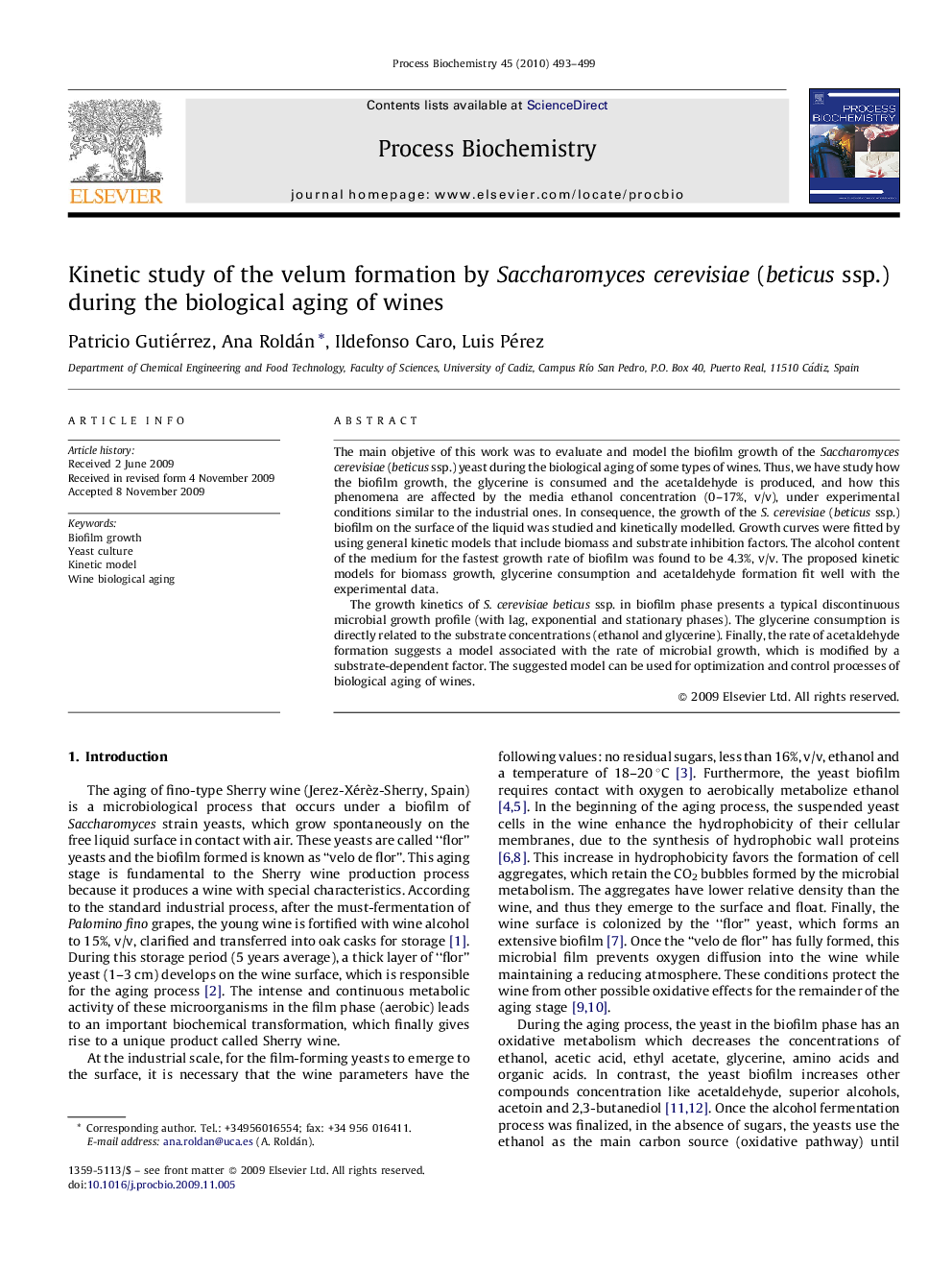| Article ID | Journal | Published Year | Pages | File Type |
|---|---|---|---|---|
| 35776 | Process Biochemistry | 2010 | 7 Pages |
The main objetive of this work was to evaluate and model the biofilm growth of the Saccharomyces cerevisiae (beticus ssp.) yeast during the biological aging of some types of wines. Thus, we have study how the biofilm growth, the glycerine is consumed and the acetaldehyde is produced, and how this phenomena are affected by the media ethanol concentration (0–17%, v/v), under experimental conditions similar to the industrial ones. In consequence, the growth of the S. cerevisiae (beticus ssp.) biofilm on the surface of the liquid was studied and kinetically modelled. Growth curves were fitted by using general kinetic models that include biomass and substrate inhibition factors. The alcohol content of the medium for the fastest growth rate of biofilm was found to be 4.3%, v/v. The proposed kinetic models for biomass growth, glycerine consumption and acetaldehyde formation fit well with the experimental data.The growth kinetics of S. cerevisiae beticus ssp. in biofilm phase presents a typical discontinuous microbial growth profile (with lag, exponential and stationary phases). The glycerine consumption is directly related to the substrate concentrations (ethanol and glycerine). Finally, the rate of acetaldehyde formation suggests a model associated with the rate of microbial growth, which is modified by a substrate-dependent factor. The suggested model can be used for optimization and control processes of biological aging of wines.
